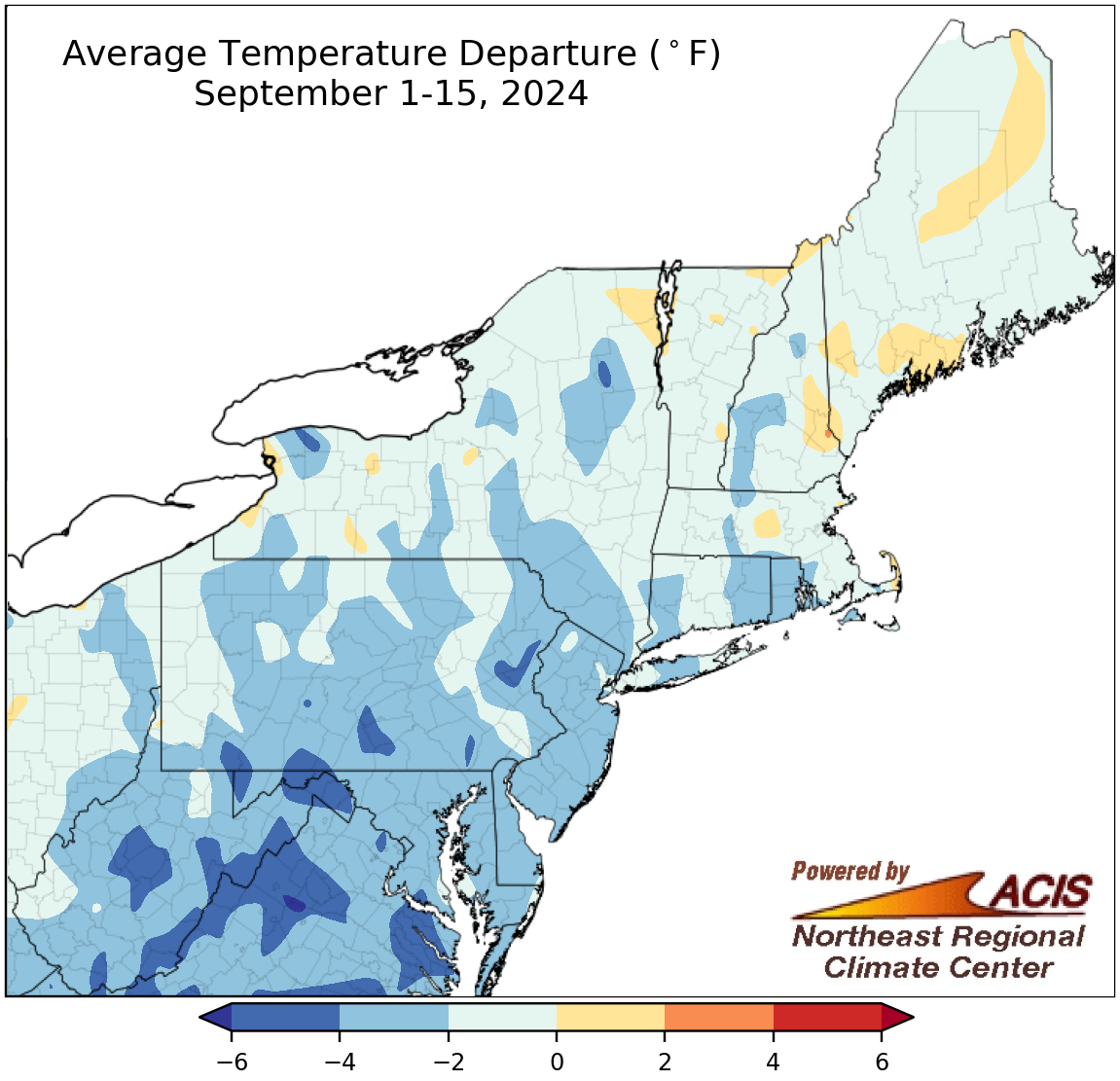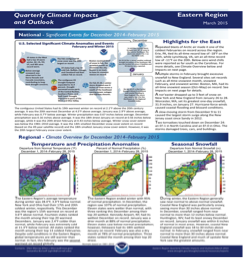

A Dry, Cool Start to September
Much of the Northeast was very dry during the first half of September, with 26 of the region's 35 major climate sites seeing less than 25% of normal precipitation. This unusual dryness was somewhat balanced by cooler-than-normal temperatures, which were experienced by 29 of the major climate sites.
Read more in the NRCC BlogWest Virginia Drought Status

Drought Intensifies
Exceptional drought pushed southward and eastward in West Virginia this week, while the extent of extreme and severe drought also expanded across the state. Extreme drought now covers 53% of West Virginia, beating the state’s previous record during the U.S. Drought Monitor era of 43% set just last week. Combined, exceptional and extreme drought cover over 60% of the state, with the area not in drought shrinking this week. This expansion was due to factors such as ongoing drought-related impacts and persistent rainfall deficits, which range from 4 to 6 inches below normal for Beckley, Charleston, Elkins, and Huntington for the past 90-day period (June 13–September 10). In fact, this June 13-September 10 period ranked among the 10 driest such periods for three of those sites. Of note, though, part of the northern edge of exceptional drought contracted slightly due to localized beneficial rainfall.
For the third consecutive week, all of West Virginia had topsoil moisture in the very short-short categories, based USDA crop reports for the week ending September 8. The report continued to show the condition of pastures, corn, soybeans, apples, and hay in the very poor, poor, and fair categories, with none in the good or excellent categories – similar to the past two weeks. Streamflow, groundwater levels, and reservoir levels were below normal across much of the state, with Richwood, WV, recently enacting mandatory water restrictions.
Outlooks from NOAA’s Climate Prediction Center for the 6-10- and 8-14-day periods (September 17-25) predict above-normal temperatures and near- or above-normal precipitation. Above-normal temperatures could lead to increased evapotranspiration rates; however, some of that may be offset in areas that see above-normal precipitation. There continues to be an elevated risk of wildfires beyond what is typical for fall in West Virginia. The NRCC’s full weekly drought update can be found here and drought impacts can be reported here and viewed here.
Website Highlights
Weather Station Data
Weather Station Data includes location-specific information, such as wind data, evapotranspiration, and daily almanacs.

CLIMOD 2 is a user-friendly website to find single-station and multi-station climate products for locations accross the country. For example, the Seasonal Ranking report produces a graph and table of extremes or other summaries for a specified period for each year.
Go to CLIMOD 2State & Regional Analyses
These provide several map types, regional climate summaries, snow survey data, and drought information.

The Monthly Maps offer a variety of monthly precipitation and temperature departure maps for any given month for the Northeast region or a selected state.
Go to Monthly Map pageAnalyses for Industry
Analyses for Industry shows products the NRCC has created through partnerships with various industries.

Recent Extreme Precipitation Changes in the Northeast U.S. compares the amounts and return periods of extreme precipitaiton events to a past reference year.
Go to Extreme Precipitation PageClimate Change Resources
Climate Change Resources includes normal difference maps as well as climate links.

Climate Links offer an abundance of resources for the Northeast across multiple sectors …
Go to Climate Change Resources pageWebinars & Workshops
Webinars & Workshops provides recordings and presentations from the monthly webinar series, as well as information on past and upcoming workshops.

The Northeast Regional Climate Center hosts a monthly webinar series with NOAA affiliates to address timely weather and climate concerns.
Go to Monthly WebinarsPublications & Services
Publications & Services includes the NRCC blog, quarterly outlooks, as well as other reports and publications.

The Quarterly Outlooks are seasonal climate highlights and outlook for the upcoming season for the Eastern, Region, Great Lakes, and Gulf of Maine. Published in March, June, September and December.
Go to Quarterly Reports